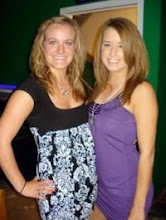I was completely shocked to read how different this novel was from Aunt Safiyya and the Monastery. The setting was the main reason for this.
Jassim and Salwa own a beautiful house in Albuquerque, New Mexico. Jassim drives a Mercedes, and Salwa makes enough money to send large sums to help her Palestinian family in Jordan. To all outside appearances, Jassim and Salwa seem to have captured the American dream. In spite of all the outward success, they find an emptiness at the heart of their relationship. Jassim seeks “balance” through his routine of swimming at the Olympic-sized swimming pool at the Fitness Bar. Salwa goes to the mall to add to her overabundant collection of expensive lingerie. Unfulfilled in spite of the comforts and luxuries of their American life, they lie to each other and so worsen their alienation from one another.
The September 11th attacks only make matters worse in ter ms of Jassim’s and Salwa’s relationship. Their Arab, Muslim background seems to automatically render them suspect in the eyes of people around them. As they i become the objects of distrust and fear, the couple is forced to confront the breakdown of their material status.
ms of Jassim’s and Salwa’s relationship. Their Arab, Muslim background seems to automatically render them suspect in the eyes of people around them. As they i become the objects of distrust and fear, the couple is forced to confront the breakdown of their material status.
Ironically, it is the very breakdown of their dreams that compels the two to seek more from their lives. Only when they move beyond the false protectiveness of their manicured homes and professional jobs do they find connections with other Americans for whom the promise of a happy ending seems equally unattainable.
Pain, loss and sorrow, Halaby suggests, are the links that bind humanity together, bridging differences across class, culture and religion. At the same time, however, she also hints that those bridges are fragile and that for some, like her protagonists, healing can only come after a return home from the seductions and false allure of the promised land. In Halaby’s novel, “wishes don’t come true for Arabs in America” (p. 184), at least not after 9/11.
In some ways, Halaby offers a bleak picture of being Arab in America in the aftermath of September 11th. Her characters seem to stagger toward their destruction, seemingly without control over lives. At times, they even appear somewhat flat, seeming to serve a functional rather than an intrinsically meaningful purpose in the narrative.
Jassim and Salwa own a beautiful house in Albuquerque, New Mexico. Jassim drives a Mercedes, and Salwa makes enough money to send large sums to help her Palestinian family in Jordan. To all outside appearances, Jassim and Salwa seem to have captured the American dream. In spite of all the outward success, they find an emptiness at the heart of their relationship. Jassim seeks “balance” through his routine of swimming at the Olympic-sized swimming pool at the Fitness Bar. Salwa goes to the mall to add to her overabundant collection of expensive lingerie. Unfulfilled in spite of the comforts and luxuries of their American life, they lie to each other and so worsen their alienation from one another.
The September 11th attacks only make matters worse in ter
Ironically, it is the very breakdown of their dreams that compels the two to seek more from their lives. Only when they move beyond the false protectiveness of their manicured homes and professional jobs do they find connections with other Americans for whom the promise of a happy ending seems equally unattainable.
Pain, loss and sorrow, Halaby suggests, are the links that bind humanity together, bridging differences across class, culture and religion. At the same time, however, she also hints that those bridges are fragile and that for some, like her protagonists, healing can only come after a return home from the seductions and false allure of the promised land. In Halaby’s novel, “wishes don’t come true for Arabs in America” (p. 184), at least not after 9/11.
In some ways, Halaby offers a bleak picture of being Arab in America in the aftermath of September 11th. Her characters seem to stagger toward their destruction, seemingly without control over lives. At times, they even appear somewhat flat, seeming to serve a functional rather than an intrinsically meaningful purpose in the narrative.


